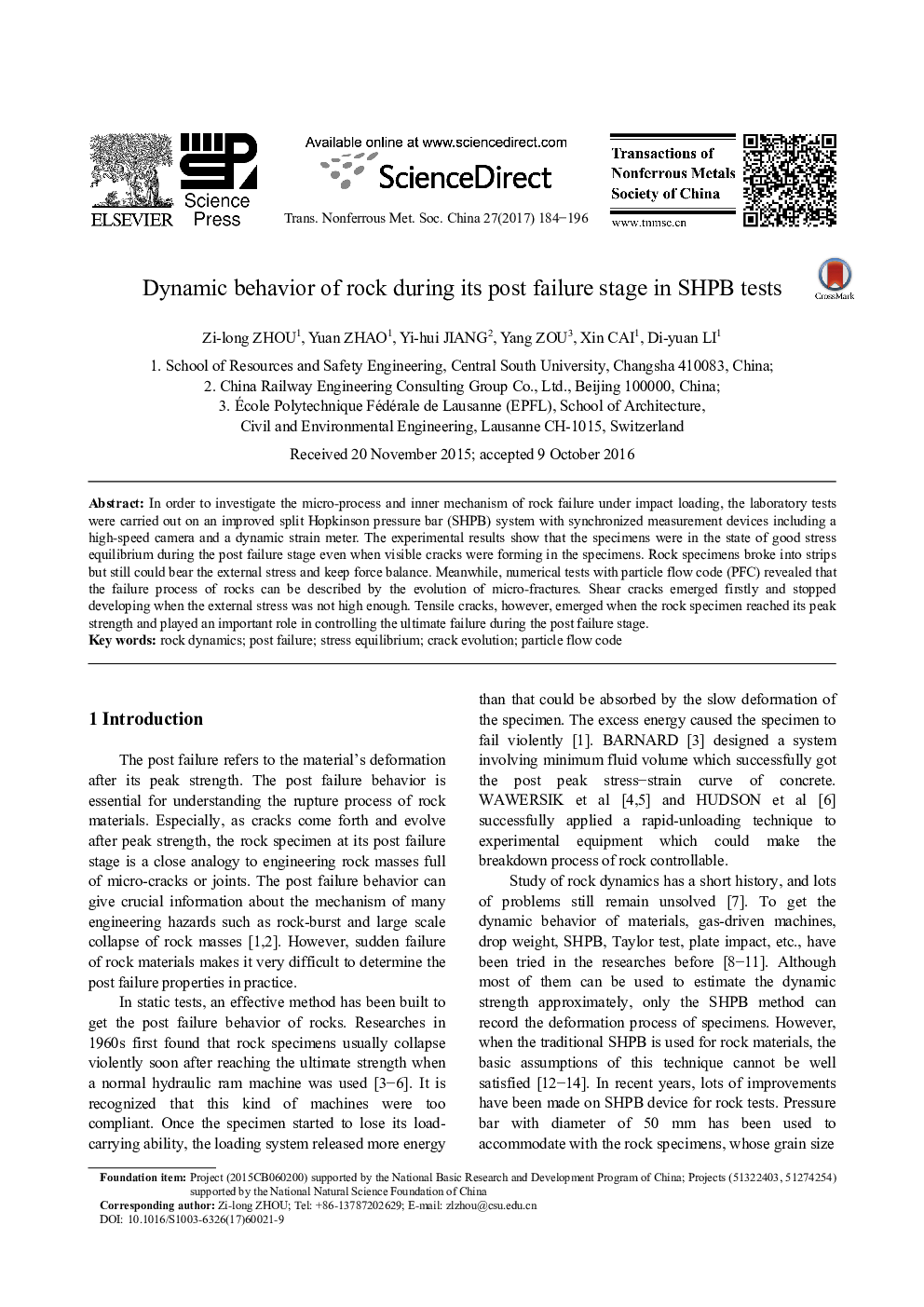| Article ID | Journal | Published Year | Pages | File Type |
|---|---|---|---|---|
| 8012092 | Transactions of Nonferrous Metals Society of China | 2017 | 13 Pages |
Abstract
In order to investigate the micro-process and inner mechanism of rock failure under impact loading, the laboratory tests were carried out on an improved split Hopkinson pressure bar (SHPB) system with synchronized measurement devices including a high-speed camera and a dynamic strain meter. The experimental results show that the specimens were in the state of good stress equilibrium during the post failure stage even when visible cracks were forming in the specimens. Rock specimens broke into strips but still could bear the external stress and keep force balance. Meanwhile, numerical tests with particle flow code (PFC) revealed that the failure process of rocks can be described by the evolution of micro-fractures. Shear cracks emerged firstly and stopped developing when the external stress was not high enough. Tensile cracks, however, emerged when the rock specimen reached its peak strength and played an important role in controlling the ultimate failure during the post failure stage.
Related Topics
Physical Sciences and Engineering
Materials Science
Metals and Alloys
Authors
Zi-long ZHOU, Yuan ZHAO, Yi-hui JIANG, Yang ZOU, Xin CAI, Di-yuan LI,
